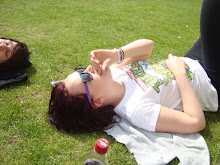Attempt to include information on-Context- Gallery info & history, curatorial issues etcA physical description of at least one workTheoretical contextualization and analysis- linking to theoretical ideas and using quotes etcInfo about the artist(s) / designer(s)A critique of the curatorial strengths and weaknesses of the show



The exhibition, curated by Penelope Curtis, celebrates the work of Edinburgh-based artist Alan Johnston, who had the HMI closed to the public for 4 weeks whilst single-handedly constructing his drawings upon the main gallery’s towering walls. The drawings themselves – short, sporadic pencil marks confined within meticulously precise lines, spanning the length and breadth of the vast, crisp white walls – are used as illusive tools to bring the architectural qualities of the gallery space to life, deeming it a work of art in its own right.
The minimalist nature of the exhibition draws obvious parallels with the Modernist movement; the pencil marks constrained to rigorously architectural forms are comparative to that of Mondrian’s linear compositions, in which the presence of the piece is marked by its bold use of right-angled structures. Yet it’s site specific nature and manipulation of the viewers experience of a given space holds feint echoes of the early works of James Turrell, who described his collision of light, shape and space not as minimalist or conceptual, but as ‘perceptual’.
In conjunction with the powerful wall drawings, the exhibition also features a series of comparatively minute pencil drawings applied to plaster, lino and wood dispersed at eye level amongst the galleries corners, alongside two sculptural, engineered spaces displayed upon plinths in the centre of the furthest room. The inclusion of such pieces is undoubtedly the only questionable aspect of the curatorial process. The bold decision to exclude any form of introductory text or titling was a demonstration of ingenuity on Curtis's part – such a feature would have seen confused visitors flock to it, unwilling to trust their own interpretation, seeking some form of justification. And yet these small, tiled drawings seem to contradict that very point; detracting away from the sheer magnitude of everything else in the room. Having said that, there is something to be said about their positioning: in the opposite corner to the doorway in each of the three large rooms, forcing the viewer to cross the space, physically dissecting it and gaining another vantage point.
‘Drawing a Shadow’ will unquestionably be met with criticism by those unwilling to deviate on their traditionalist views of sculpture. However, regardless of whether you conceive Johnston’s work inspirational or a mere act of pretension there is no doubt in my mind that this exhibition merits a visit simply to experience, if anything, the sheer humility, exposure and awe inflicted upon the individual by this haunting space.


No comments:
Post a Comment